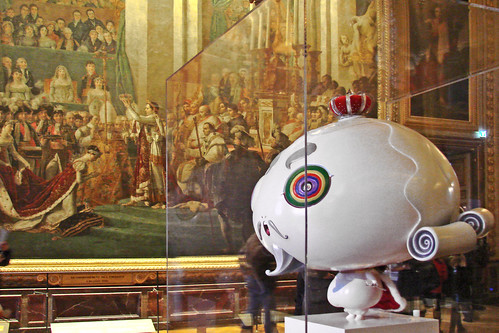As it’s panto season – oh no it isn’t – we’re going to start this blog by talking about a popular 19th Century tale that makes great pantomime but isn’t often performed in this format. That story is The Emperor’s New Clothes.
You’re all familiar with the Danish short story written by Hans Christian Anderson, where a vain emperor rides naked on horseback through the streets believing he’s wearing clothes so fine only those of a suitable stature can see them. The gathered throng can all see he’s not got a stitch on, but they’re too scared to say; no one wants to appear stupid. Only once a child pipes up with the truth does the rest of the crowd agree.
The story is a fairy tale of course, but its themes apply to business and organisations, particularly when thinking about change. If you don’t do it properly or don’t listen to the right people, you can quickly become the emperor in new clothes where people will just follow your changes because they have to. And when this happens, your changes and initiatives aren’t likely to land properly.
The concept of the emperor’s new clothes is used as a metaphor for anything seen as pretentious, pompous, hypocritical or ridiculous. It’s definitely not a compliment. And one of the places it happens the most is in the workplace. If workers feel they can’t speak out or aren’t involved in things, they’ll simply go along with it even though they don’t agree with them.
There’s a great couple of lines in the 1996 101 Dalmatians movie where Glenn Close’s Cruella De Vil asks: ‘What kind of sycophant are you?’ to her assistant Frederick, who then replies: ‘What kind of sycophant would you like me to be?’ Like the emperor’s new clothes, this teaches us about involving the right people – the ones who actually know what they’re talking about and can help things happen – and not just those who agree with you whatever you say or do, when you’re thinking of changing something (like the crowd in Christian Anderson’s tale).
We mentioned panto earlier. One of the things that makes a great panto is audience participation. If the audience is involved and engaged they’ll join in and make the performance even more brilliant. If they’re not, it’s more likely to fall flat on its face. Why not try using this approach in your organisation? Engage and involve your people when making changes or introducing something new and see how much more positively they’ll react.
As a leader or manager within an organisation, it’s up to you to not be the emperor with the new clothes. Be ready to discuss change to get the people that matter’s opinions, and get everyone engaged and enthusiastic. Transparency is what’s important, as well as your – and others – willingness to change and explain why you’re changing.
So come on. Get your people (he’s) behind you. And you’ll find any sort of change much easier to manage.
[optin title=”If you’d like to discuss changes in your organisation, we’d love to hear from you” border=”true” text=”leave your details below and we’ll get back to you” buttontext=”Submit” leadlist=”609939″ successMessage=”Message has been submitted successfully.” errorMessage=”Failed to send your message. Please try later.” invalidEmailMessage=”Your email address does not appear valid.” image=”http://www.justlibra.com/wp-content/uploads/2016/10/Just-Libra-logo.png” collectfirstname=”true” collectlastname=”true” collectphone=”true” collectcompany=”true” id=”13434″]








